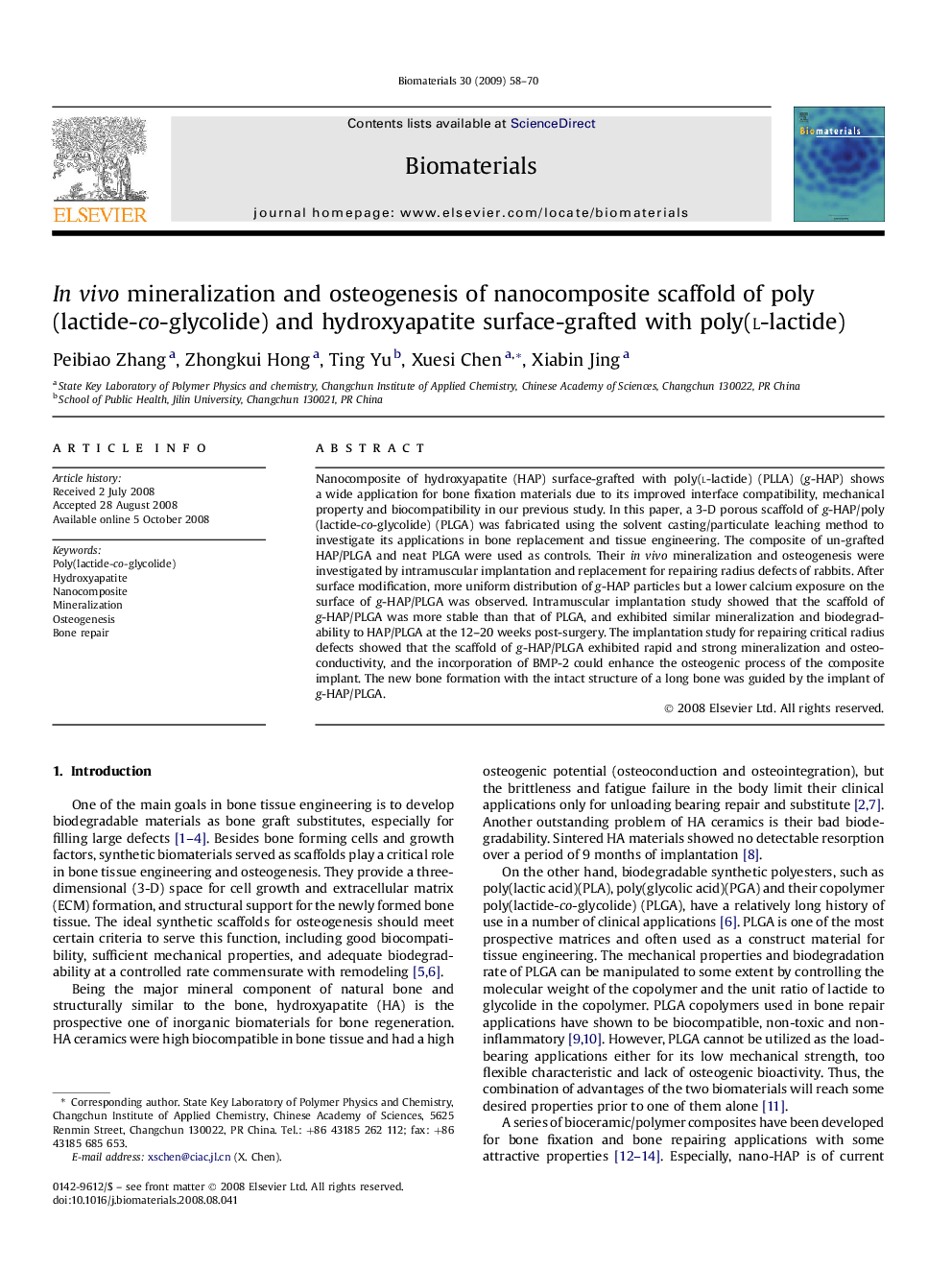| Article ID | Journal | Published Year | Pages | File Type |
|---|---|---|---|---|
| 9525 | Biomaterials | 2009 | 13 Pages |
Nanocomposite of hydroxyapatite (HAP) surface-grafted with poly(l-lactide) (PLLA) (g-HAP) shows a wide application for bone fixation materials due to its improved interface compatibility, mechanical property and biocompatibility in our previous study. In this paper, a 3-D porous scaffold of g-HAP/poly(lactide-co-glycolide) (PLGA) was fabricated using the solvent casting/particulate leaching method to investigate its applications in bone replacement and tissue engineering. The composite of un-grafted HAP/PLGA and neat PLGA were used as controls. Their in vivo mineralization and osteogenesis were investigated by intramuscular implantation and replacement for repairing radius defects of rabbits. After surface modification, more uniform distribution of g-HAP particles but a lower calcium exposure on the surface of g-HAP/PLGA was observed. Intramuscular implantation study showed that the scaffold of g-HAP/PLGA was more stable than that of PLGA, and exhibited similar mineralization and biodegradability to HAP/PLGA at the 12–20 weeks post-surgery. The implantation study for repairing critical radius defects showed that the scaffold of g-HAP/PLGA exhibited rapid and strong mineralization and osteoconductivity, and the incorporation of BMP-2 could enhance the osteogenic process of the composite implant. The new bone formation with the intact structure of a long bone was guided by the implant of g-HAP/PLGA.
